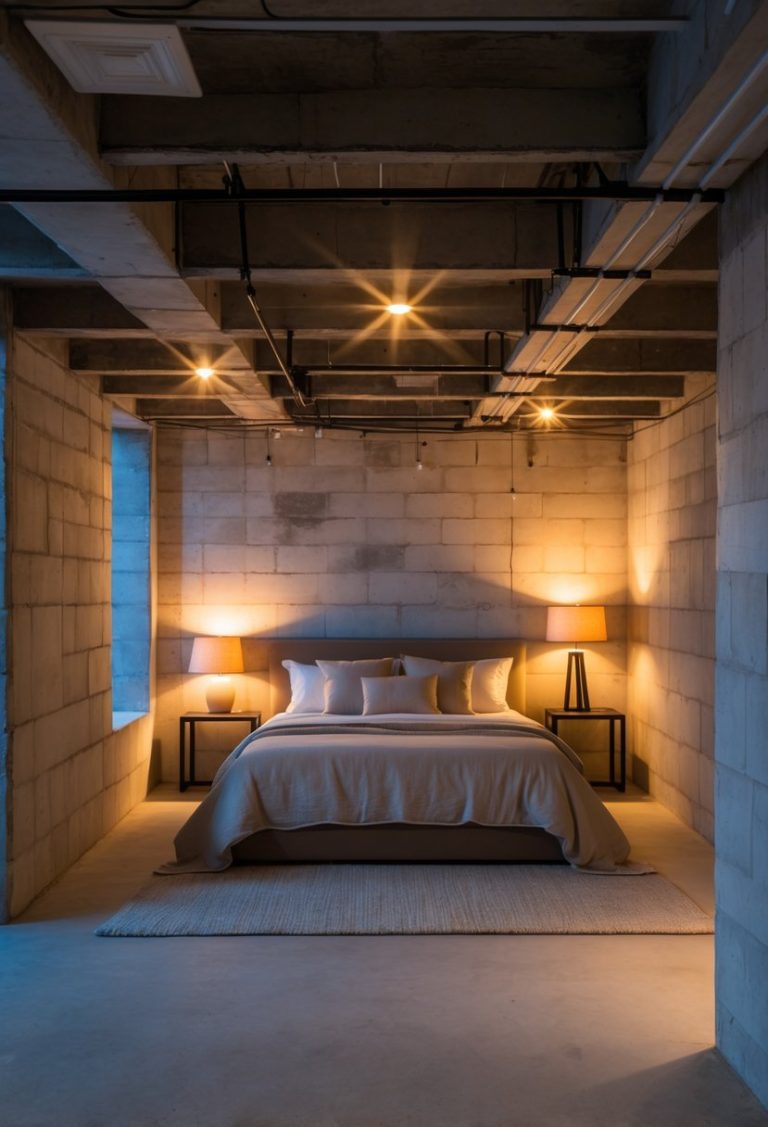7 Basement Bedroom Ideas to Maximize Space and Comfort
Many homeowners look for ways to create comfortable and functional bedrooms in their basements. These spaces often come with challenges like low ceilings, limited natural light, and a cooler atmosphere. However, with the right approach, a basement can become an inviting and practical bedroom.
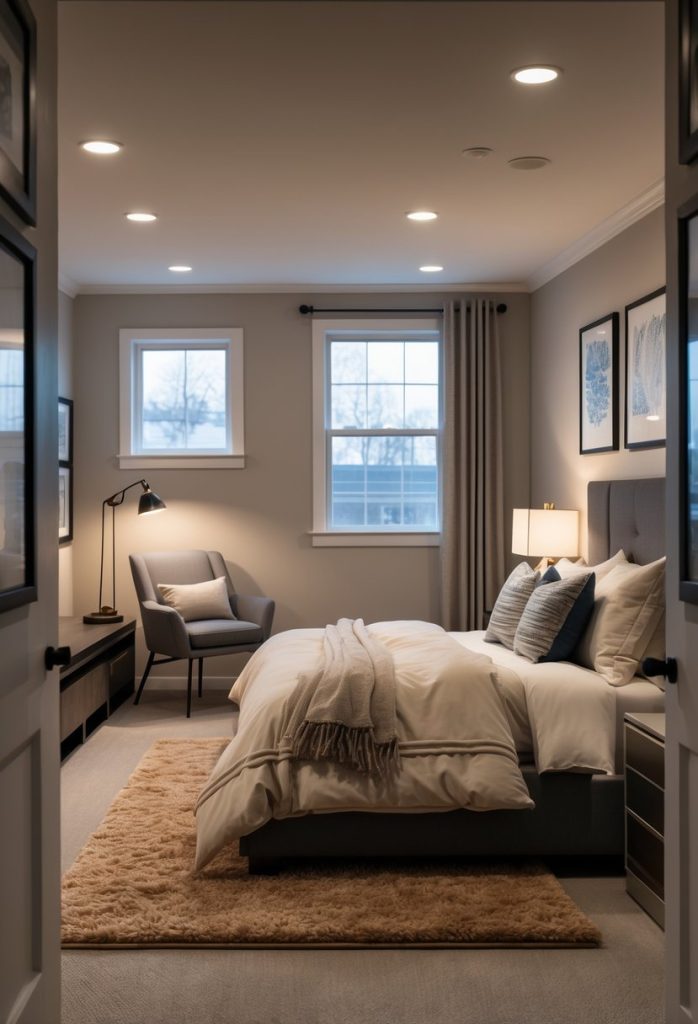
Basement bedrooms can be transformed into cozy, stylish spaces that make good use of available room and light. This article offers ideas to help people design basement bedrooms that feel warm and livable without feeling cramped or unfinished.
1) Add a botanical accent wall for natural vibrancy
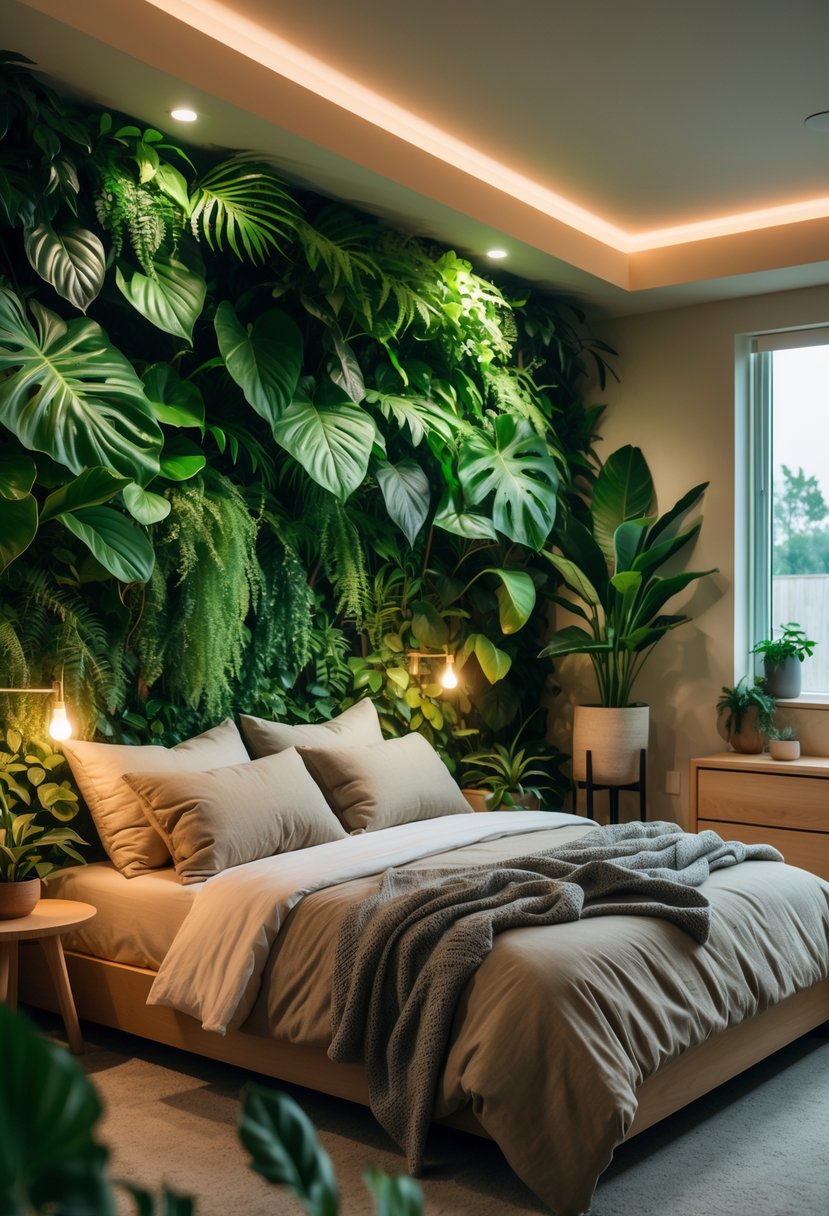
A botanical accent wall brings life and color to a basement bedroom. It can brighten the space and make it feel more inviting.
Using large plant prints or leafy wallpaper adds texture without cluttering the room. This design choice helps create a calm, natural atmosphere.
It also works well with simple furniture and soft lighting to keep the space balanced and open.
2) Install floor-to-ceiling storage to maximize space

They can add floor-to-ceiling storage units to use every inch of the basement walls. This helps keep the room organized and reduces clutter. Tall cabinets or shelves work well for storing clothes, books, or other personal items. It also frees up floor space, making the bedroom feel more open and easier to move around in.
3) Use built-in ceiling lighting for a clean, bright look
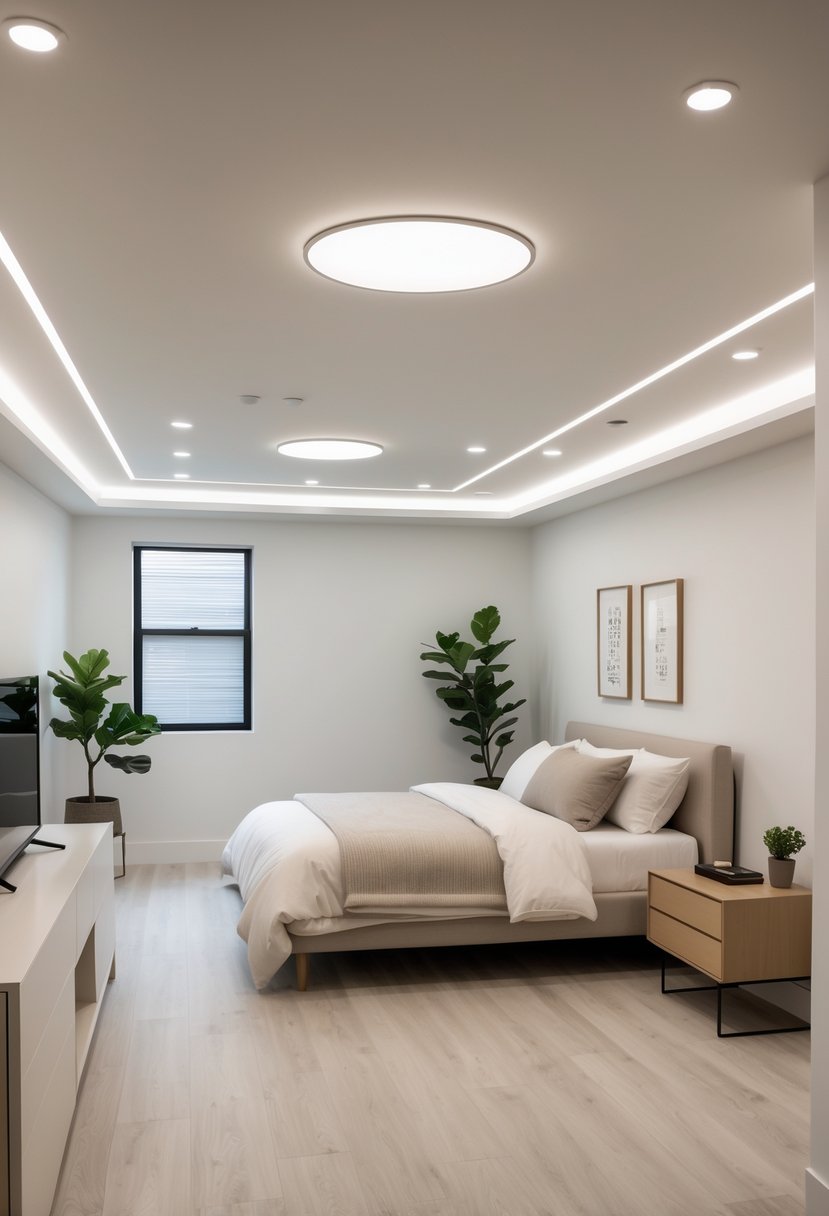
Built-in ceiling lights help keep a basement bedroom looking tidy. They fit flush with the ceiling, which is useful for low ceilings.
These lights spread even illumination across the room. This reduces shadows and makes the space feel brighter.
LED recessed lights are a common choice. They use less energy and last longer than traditional bulbs.
4) Incorporate warm wood flooring for natural warmth
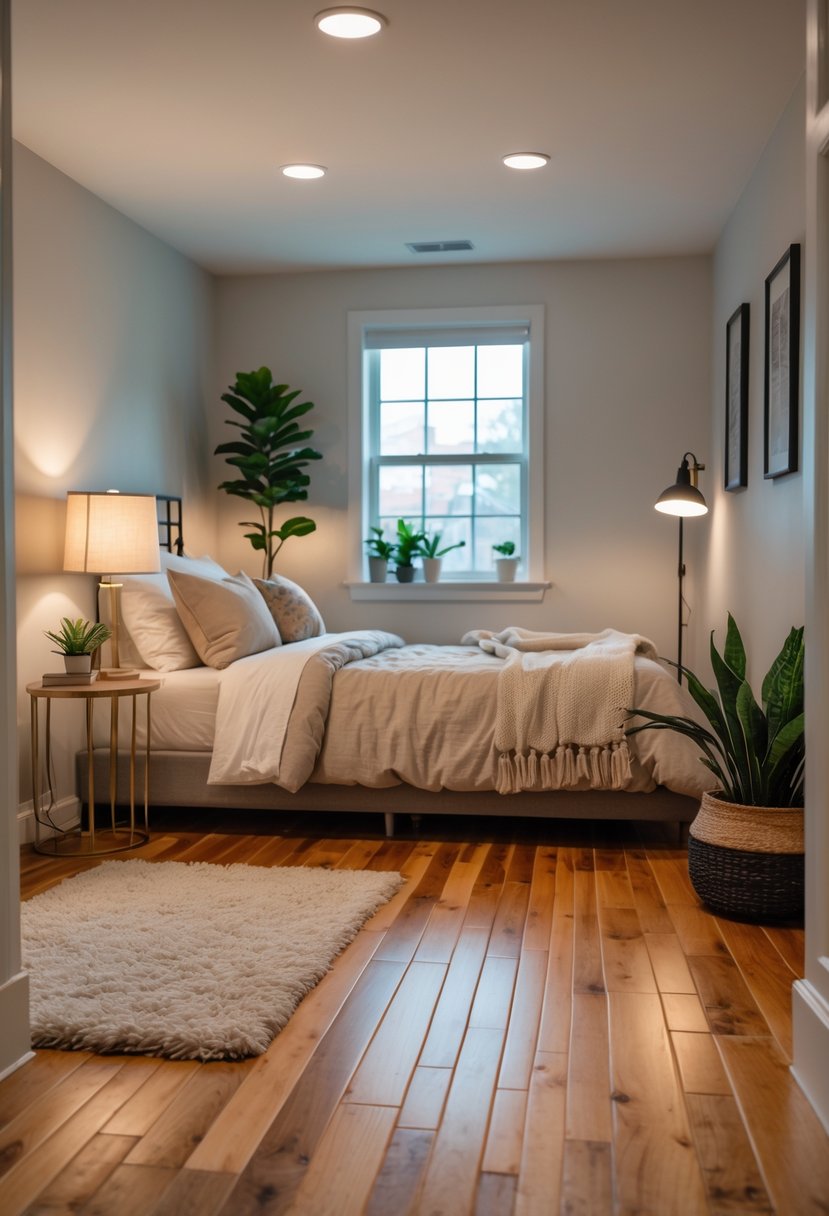
Warm wood flooring adds a natural feel to a basement bedroom. It helps make the space look inviting and less cold.
Choosing wood tones like oak or walnut adds depth and character. The flooring also pairs well with other warm decor elements.
Wood floors are easy to maintain and durable. They create a cozy setting without needing extra accessories.
5) Add textured area rugs for comfort and style
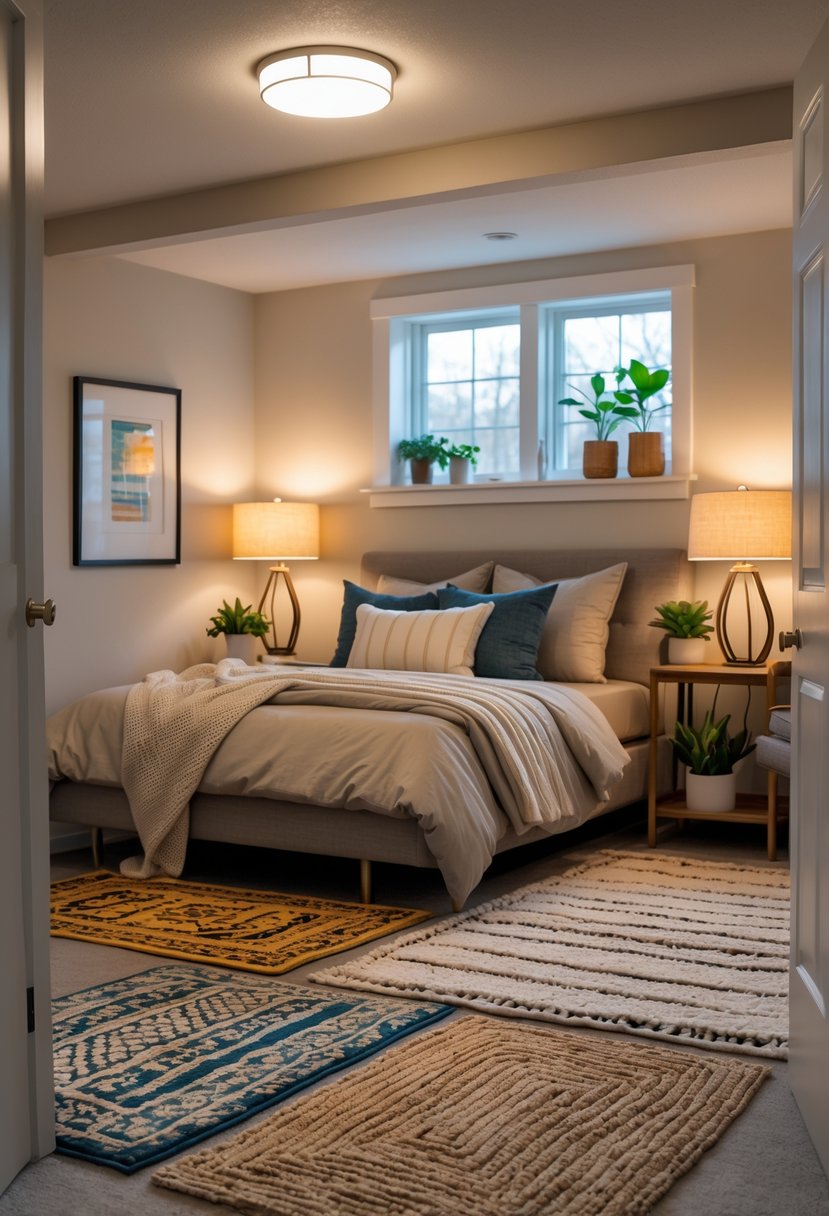
Textured area rugs make a basement bedroom feel warmer and more inviting. They add softness underfoot and help reduce echo in the room.
Choosing rugs with patterns or unique weaves can also enhance the visual interest. Moisture-resistant materials are best for basements to avoid damage from dampness.
6) Use curtains or drapery panels to soften walls and improve acoustics

Curtains can make basement walls look less hard and cold. They add texture and color, which helps a room feel warmer.
Thick drapery panels can also reduce echo and noise. This makes the basement bedroom quieter and more comfortable.
Using curtains on walls or as room dividers is an easy way to change the space without major work.
7) Paint walls in warm neutral shades to create coziness

Warm neutral colors like soft beige, creamy white, and gentle gray add a calm, inviting feel to a basement bedroom. These shades help balance low natural light, making the space feel warmer and more comfortable.
Choosing warm undertones in paint, such as hints of yellow or pink, can enhance the cozy atmosphere without overwhelming the room. This approach works well with simple furniture and soft textiles.
Basement Bedroom Design Fundamentals
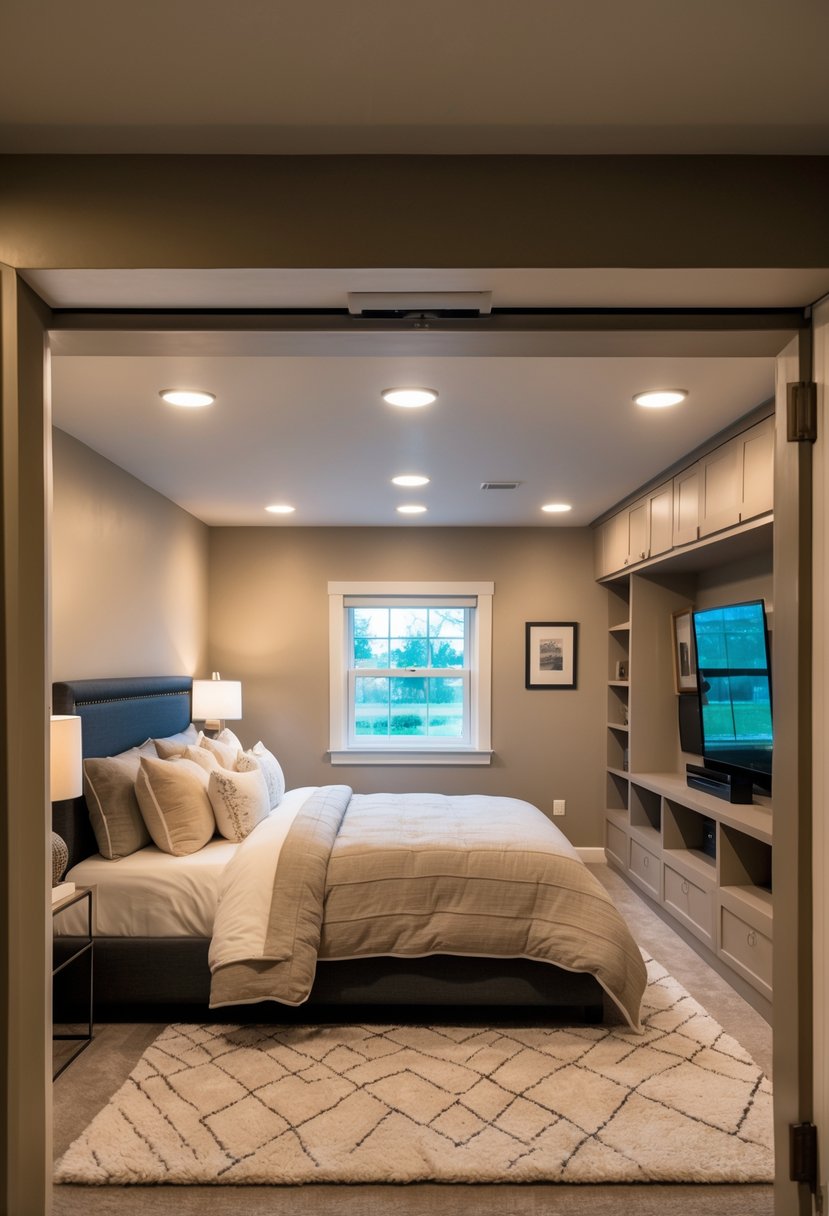
A basement bedroom needs careful attention to light and air to feel comfortable and inviting. Proper lighting can brighten dark spaces, while good ventilation keeps the air fresh and prevents dampness. These elements are key to making the basement a healthy and usable living area.
Lighting Solutions for Low-Light Basements
Basements often lack natural light, so layering light sources is important. Use a mix of ambient lighting (like ceiling LEDs or flush mounts) and task lighting (such as bedside lamps or wall sconces) to cover different needs.
Adding reflective surfaces like mirrors or light-colored walls helps bounce light across the room. Installing dimmable lights lets occupants adjust brightness for comfort.
If possible, include window wells or egress windows to allow daylight and meet safety codes. LED lights with higher color rendering (CRI 80+) make rooms feel more natural.
Optimizing Ventilation and Air Quality
Basements can feel stuffy and sometimes damp, so ventilation is essential. Installing a ventilation fan or using a dehumidifier helps reduce moisture and prevent mold growth.
If the basement connects to the HVAC system, adding air vents or return ducts will improve airflow.
Regularly checking for leaks in windows and walls prevents moisture intrusion. Using air purifiers also reduces dust and pollutants, improving overall air quality.
Proper ventilation paired with moisture control ensures the basement remains a safe and comfortable bedroom space.
Safety Codes and Legal Considerations
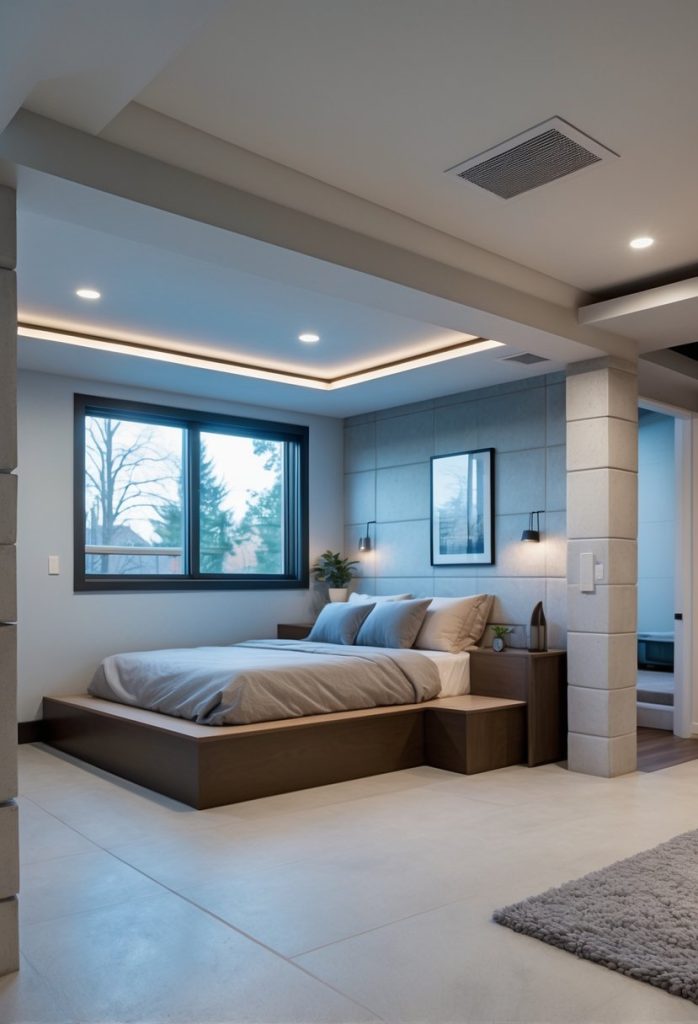
Making a basement bedroom safe and legal requires meeting specific building codes. These rules focus on emergency exits and preventing moisture problems. Homeowners must follow these guidelines to ensure the room is both safe and livable.
Egress Requirements for Basement Bedrooms
Basement bedrooms must have at least one egress window or door for emergency escape. The window must open easily without tools.
The minimum opening size for an egress window is:
- 5.7 square feet for windows above ground level
- 5.0 square feet for windows below ground level
The window needs to be reachable and have a clear path outside. It should also be large enough for a person to climb through safely.
These rules are set by building codes like the International Residential Code (IRC). They help protect occupants in case of fire or other emergencies.
Moisture Protection and Waterproofing
Basements are prone to dampness, which can cause mold and structural damage. Proper waterproofing is necessary before converting a basement into a bedroom.
Key steps include:
- Installing a vapor barrier on the walls and floors
- Using waterproof paint or sealant
- Ensuring proper drainage outside to direct water away from the foundation
A dehumidifier or ventilation system may also help control humidity. Keeping the space dry is essential for health and code compliance.
Proper moisture control protects both the room’s structure and the well-being of its occupants.



